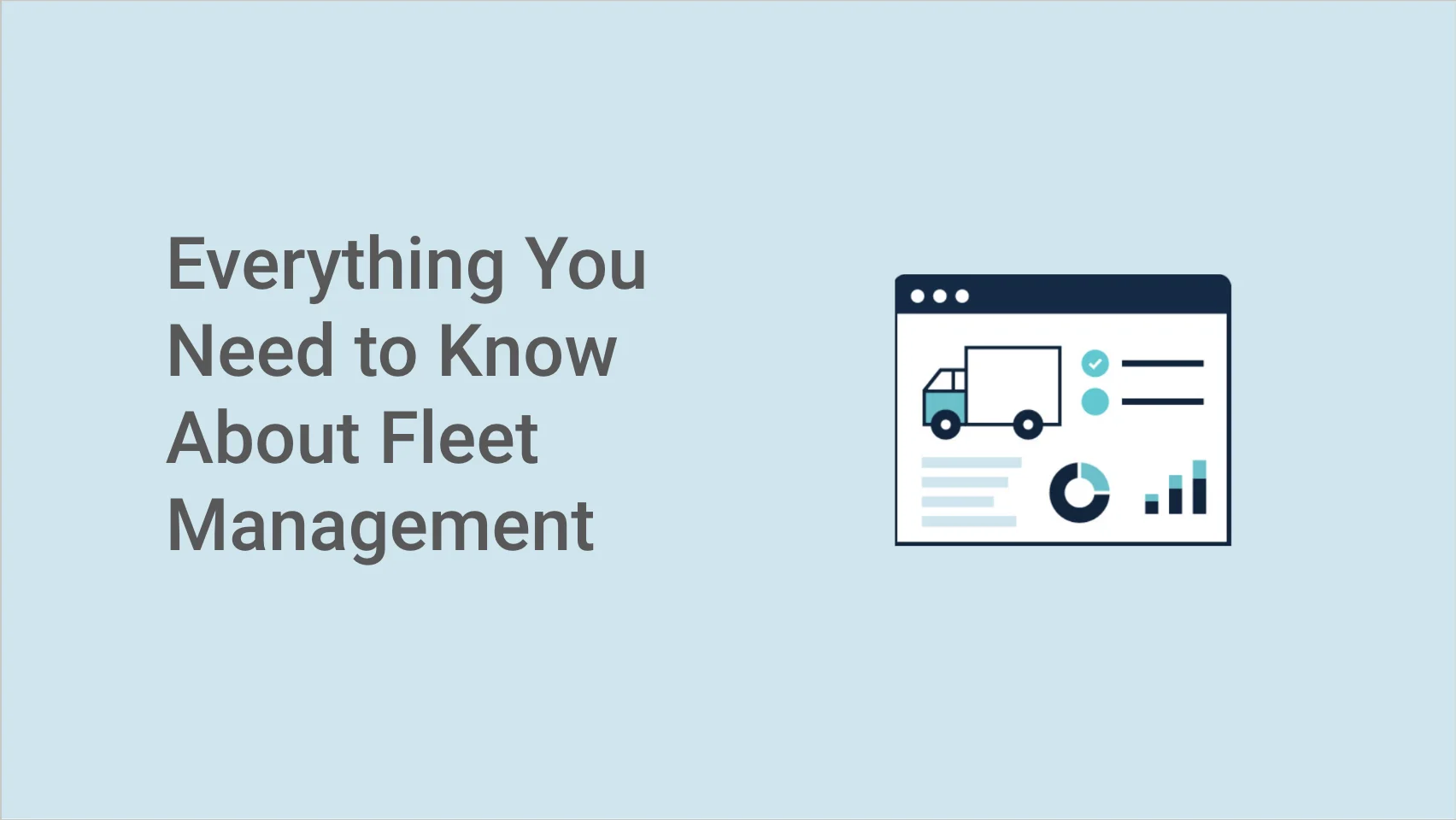How to build a comprehensive fleet strategy
July 18, 2025

Get Started with Samsara
Check our pricesKey Takeaways
A well-defined fleet strategy is essential for operational success, no matter what type of fleet you manage. By focusing on efficiency, safety, compliance, and sustainability, organizations can optimize their fleet operations while reducing expenses. In this guide, you’ll learn about developing a fleet strategy to improve fleet management and maximize profitability.
Managing a vehicle fleet without a clear strategy is like navigating without a map, creating challenges that are costly, inefficient, and frustrating. This is especially true in today’s world, where safety and compliance are critical concerns for fleet managers. According to studies, the global commercial vehicle fleet management market is expected to grow significantly in the coming years, highlighting the increasing importance of implementing a strategic fleet management strategy to ensure safety, efficiency, and compliance across your fleet.
In this guide, we’ll explore the essential building blocks of developing a fleet strategy, from fleet optimization techniques to leveraging telematics technology for effective fleet management.
What is a fleet strategy?
A fleet strategy is the comprehensive plan that guides how an organization manages, operates, and optimizes its vehicle fleet to achieve business goals. A well-defined and cost-effective fleet strategy is essential for safety, regulatory compliance, and operational efficiency in modern fleet management. On top of GPS tracking, fuel optimization, and driver safety, an effective fleet strategy also helps streamline operations for ELD compliance, asset tracking, preventative maintenance, route optimization, and more.
10 components of a successful fleet strategy
A successful fleet strategy incorporates several key components that work together to solve operational needs, optimize fleet operations, and improve the bottom line. Here are a few of the key components that fleet managers should know when developing a fleet strategy:
1. Driver safety
One of the biggest challenges in fleet operations is ensuring driver safety. Promoting safe driving behavior can be difficult, especially when vehicles are out on the road. Tools like dash cams and vehicle tracking systems offer real-time visibility, support more effective coaching, and provide valuable footage to enhance driver performance and accountability. Safety data and video footage can also be used to develop driver training programs to take a more proactive approach to safety, preventing accidents before they happen.
2. Vehicle acquisition
Accurate forecasting is key when determining how many and what types of vehicles are needed to meet operational goals. A strong acquisition strategy considers vehicle utilization, employee eligibility, lifecycle planning, fleet size, fleet vehicle procurement, and market timing. Leveraging fleet data can significantly improve this decision-making for vehicle acquisition.
3. Vehicle maintenance
Predictive maintenance is critical for keeping vehicles in optimal condition, helping to minimize downtime, reduce unplanned breakdowns, and maximize cost savings. Modern telematics solutions offer insights into fleet maintenance, diagnostics, maintenance schedules, idle time, and usage metrics. This enables a proactive approach to preventive maintenance, reducing maintenance costs and maximizing vehicle uptime.
4. ELD compliance
Since December 2017, the ELD mandate requires commercial drivers to log their Hours of Service (HOS) electronically. This helps eliminate paper logs, reduces manual work, and minimizes fatigue-related risks. Fleets subject to these regulatory requirements must implement ELD-compliant technology to ensure accurate and reliable tracking of drive time.
5. Fleet tracking
Knowing the exact location of every vehicle is key to operational safety and fleet efficiency. GPS tracking systems provide real-time location data, making it easier to monitor vehicle activity—whether you’re managing a small fleet or a large-scale operation.
6. Cost reduction
Managing operating costs is essential to improving efficiency and profitability. From fuel usage to maintenance and asset downtime, small inefficiencies can add up quickly. Strategies like fuel efficiency programs and telematics-based tracking are cost-effective strategies that can help reduce unnecessary expenses and improve the bottom line.
7. Fuel optimization
Fuel is one of the largest operating expenses that fleet managers need to consider when building a fleet management strategy. Reducing fuel consumption through idle time monitoring, route optimization, and driver behavior coaching can lead to significant cost savings. Telematics systems are able to track fuel usage patterns, identify fuel inefficiencies, and support the implementation of fuel-saving programs, helping fleets minimize fuel costs and improve fleet performance. Furthermore, fleets can leverage fuel data to make informed decisions about fleet planning to support transitioning to electric vehicles. Electrification can have a significant impact on fleet operations, helping organizations reduce emissions and achieve their sustainability goals.
8. Driver retention
Driver shortages continue to be a major concern in the transportation industry. Improving retention requires building a strong workplace culture and fostering trust between drivers and leadership. These efforts help keep drivers engaged, motivated, and committed to their roles.
9. Asset tracking
Beyond vehicles, many fleets rely on assets such as trailers, heavy equipment, or other mobile assets. Asset tracking systems provide real-time visibility into asset location, usage, and condition. Especially with today’s supply chain challenges, asset tracking is critical to reducing the risk of loss or theft, improving utilization, and ensuring assets are where they’re needed most.
10. Integrations
To take your fleet strategy to the next level, you’ll need integrations between your fleet management software and other systems—such as maintenance platforms, HR software, fuel cards, dispatch tools, and safety programs. Centralizing fleet data with API integrations enables smarter, faster decision-making across departments, reducing manual work, improving data accuracy, and enhancing fleet efficiency.
What is the best fleet management software for building a fleet strategy?
Samsara is a complete fleet management solution that helps organizations improve the efficiency, safety, and sustainability of their fleet operations. From transportation and logistics to construction and the public sector, Samsara’s fleet management system leverages industry-leading automation and AI-based insights to help you stay compliant and enhance your fleet efficiency.
Estes, the largest private freight carrier in North America, operates a massive logistics network, moving over 70 million pounds of freight a day. By leveraging Samsara, they gained real-time visibility, granular data insights, and an open API that allowed for seamless integration with their existing systems. As a result of using Samsara, Estes saved an estimated $3 million in fuel costs and improved ETA predictability by 40%, enhancing service delivery.
To learn more about how you can develop a comprehensive fleet strategy using fleet management software, explore Samsara’s Fleet Management Platform and chat with our team today.

